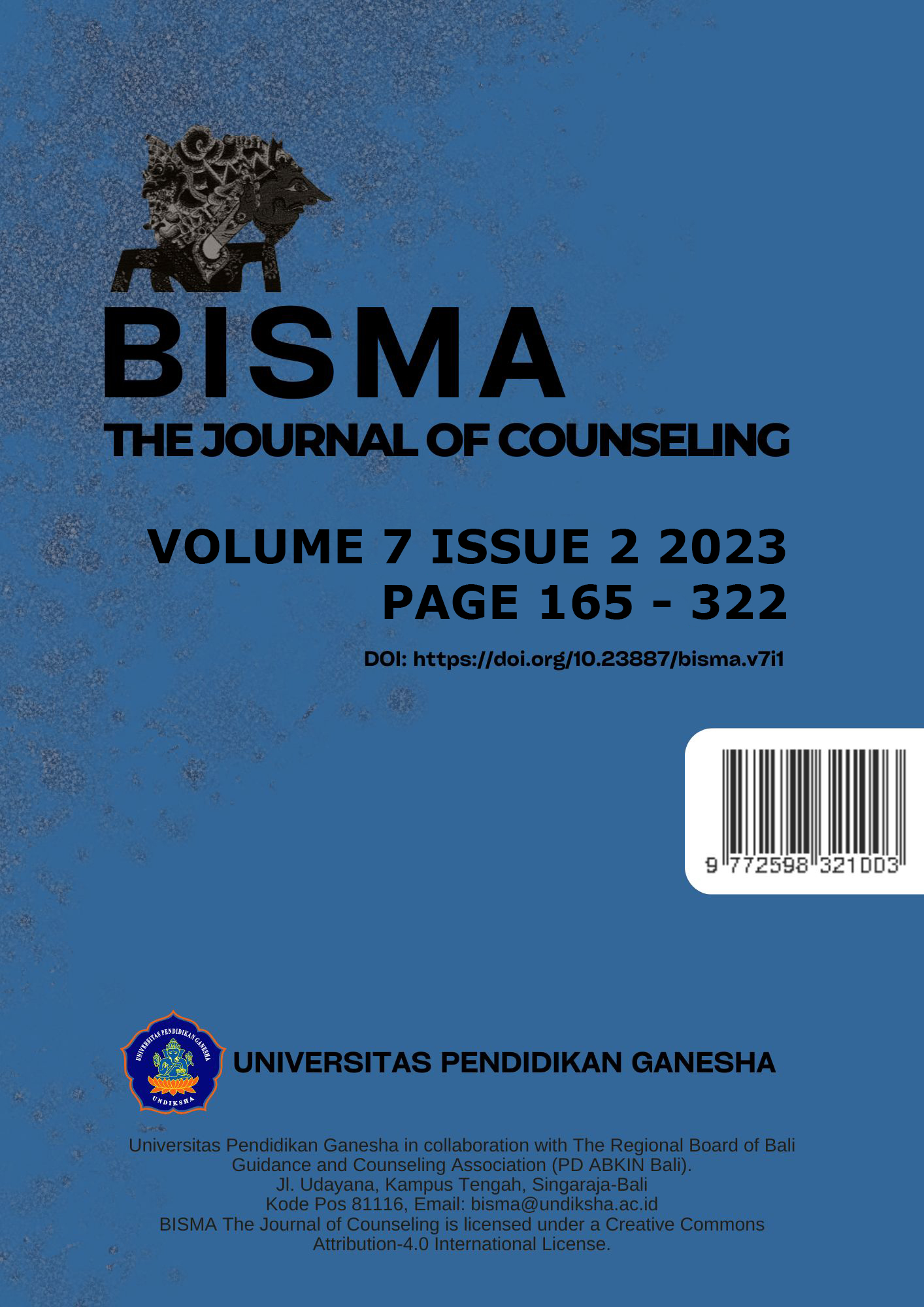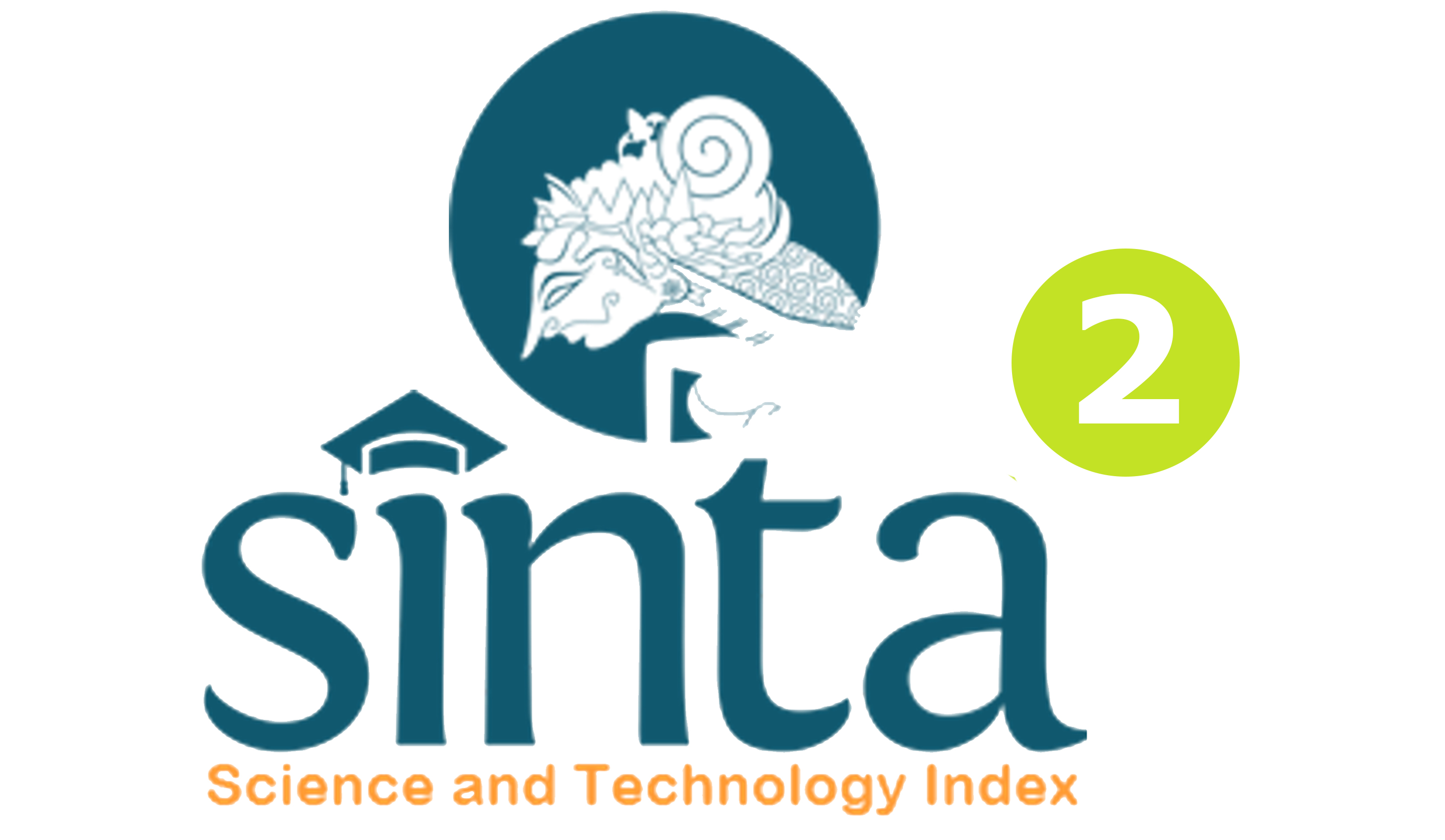The Role of Perceived Burdensomeness and Thwarted Belongingness in Suicidal Ideation among University Undergraduates
DOI:
https://doi.org/10.23887/bisma.v7i2.69720Keywords:
Suicidal Ideation, Perceived Burdensomeness, Thwarted Belongingness, Interpersonal Theory of SuicideAbstract
Suicidal ideation is a significant concern among university students and understanding the factors that contribute to this distressing phenomenon is crucial for prevention and intervention efforts. Identifying the specific factors that contribute to suicidal thoughts and behaviors can tailor their interventions to address the unique needs of this population. This study aims to analyze relationship between perceived burdensomeness, thwarted belongingness and suicidal ideation among University undergraduates. The study is cross-sectional and uses a composite measure of suicidal behaviors. Three research questions and four hypotheses were raised to guide the study. The study used a quantitative research design to collect data from University undergraduates. A sample of 177 students participated in the study, completing self-report measures assessing perceived burdensomeness, thwarted belongingness and suicidal ideation. The participants completed questionnaires assessing their levels of perceived burdensomeness, thwarted belongingness and suicidal ideation. The study indicated that the prevalence of suicidal ideation among the participants was found to be moderate. This finding is significant as it highlights the importance of addressing feelings of burdensomeness to prevent suicidal ideation among university students.
References
Al-Zoubi, S. M., & Younes, M. A. B. (2015). Low Academic Achievement: Causes and Results. Theory and Practice in Language Studies, 5(11), 2262. https://doi.org/10.17507/tpls.0511.09.
Baker, D., Unni, R., Kerr-Sims, S., & Marquis, G. (2020). Understanding factors that influence attitude and preference for hybrid course formats. E-Journal of Business Education & Scholarship of Teaching, 14(1), 174–188. https://files.eric.ed.gov/fulltext.
Baloran, E. T. (2020). Knowledge, attitudes, anxiety, and coping strategies of students during COVID-19 pandemic. Journal of Loss and Trauma, 25(8), 635–642. https://doi.org/10.1080/15325024.2020.1769300.
Beames, J. R., Johnston, L., O’Dea, B., Torok, M., Boydell, K., Christensen, H., & Werner Seidler, A. (2022). Addressing the mental health of school students: Perspectives of secondary school teachers and counsellors. International Journal of School & Educational Psychology, 10(1), 128–143. https://doi.org/10.1080/21683603.2020.1838367.
Black Thomas, L. M. (2022). Stress and depression in undergraduate students during the COVID-19 pandemic: Nursing students compared to undergraduate students in non-nursing majors. Journal of Professional Nursing, 38(December 2021), 89–96. https://doi.org/10.1016/j.profnurs.2021.11.013.
Chu, C., Buchman-Schmitt, J. M., Stanley, I. H., Hom, M. A., Tucker, R. P., Hagan, C. R., & Joiner Jr, T. E. (2017). The interpersonal theory of suicide: A systematic review and meta-analysis of a decade of cross-national research. Psychological Bulletin, 143(12), 1313. https://psycnet.apa.org/record/2017-47896-001.
Cooper, A. C., & Sánchez, B. (2016). The roles of racial discrimination, cultural mistrust, and gender in Latina/o youth’s school attitudes and academic achievement. Journal of Research on Adolescence, 26(4), 1036–1047. https://doi.org/10.1111/jora.12263.
Gao, T., Xiang, Y. T., Zhang, H., Gao, J., Kong, Y., Hu, Y., & Mei, S. (2018). Prevalence and correlates of suicidal behaviours among college students in Northeastern China: a cross sectional study. Psychiatric Quarterly, 89, 359–370. https://link.springer.com/article/10.1007/s11126-017-9540-9.
Granieri, A., Casale, S., Sauta, M. D., & Franzoi, I. G. (2022). Suicidal ideation among university students: a moderated mediation model considering attachment, personality, and sex. International Journal of Environmental Research and Public Health, 19(10), 6167. https://doi.org/10.3390/ijerph19106167.
Gureje, O., Kola, L., & Uwakwe, R. (2007). The profile and risks of suicidal behaviours in the Nigerian survey of mental health and well-being. Psychology Medicine, 37, 821–30. https://doi.org/10.1017/S0033291707000311pmid.
Hidayat, H., Tamin, B. Y., Herawati, S., Ardi, Z., & Muji, A. P. (2020). The Contribution of Internal Locus of Control and Self-Concept to Career Maturity in Engineering Education. International Journal on Advanced Science, Engineering and Information Technology, 10(6), 2282–2289. https://doi.org/10.18517/ijaseit.10.6.11698.
Iseselo, M. K., Kajula, L., & Yahya-Malima, K. I. (2016). The psychosocial problems of families caring for relatives with mental illnesses and their coping strategies: A qualitative urban based study in Dar es Salaam, Tanzania. BMC Psychiatry, 16(1), 1–12. https://doi.org/10.1186/s12888-016-0857-y.
Jensen-Doss, A., Haimes, E. M. B., Smith, A. M., Lyon, A. R., Lewis, C. C., Stanick, C. F., & Hawley, K. M. (2018). Monitoring treatment progress and providing feedback is viewed favorably but rarely used in practice. Administration and Policy in Mental Health and Mental Health Services Research, 45(1), 48–61. https://doi.org/10.1007/s10488-016-0763-0.
Joiner, T. E., Orden, K. A., Witte, T. K., & Rudd, M. D. (2009). The interpersonal theory of suicide: Guidance for working with suicidal clients. American Psychological Association.
Khizer, N. U., Moghal, S., & Saeed, M. A. (2021). The Effects of Self-Assessment on the Learners’ Academic Performance. PalArch’s Journal of Archaeology of Egypt/ Egyptology, 18(March), 5209–5220. https://archives.palarch.nl/index.php/jae/article/download/7111/6805.
Lai, C.-S., Au, K.-M., & Low, C.-S. (2021). Beyond Conventional Classroom Learning: Linking Emotions and Self-Efficacy to Academic Achievement and Satisfaction with Online Learning during the COVID-19 Pandemic. Journal of Education and E-Learning Research, 8(4). https://doi.org/10.20448/journal.509.2021.84.367.374.
Mamun, M. A., Alimoradi, Z., Gozal, D., Manzar, M. D., Broström, A., Lin, C. Y., Huang, R. Y., & Pakpour, A. H. (2022). Validating insomnia severity index (ISI) in a bangladeshi population: Using classical test theory and rasch analysis. International Journal of Environmental Research and Public Health, 19(1). https://doi.org/10.3390/ijerph19010225.
Musumari, P. M., Tangmunkongvorakul, A., Srithanaviboonchai, K., Techasrivichien, T., Suguimoto, S. P., Ono-Kihara, M., & Kihara, M. (2018). Grit is associated with lower level of depression and anxiety among university students in Chiang Mai, Thailand: A cross-sectional study. PLoS ONE, 13(12), 1–16. https://doi.org/10.1371/journal.pone.0209121.
Nguyen, D. T., Wright, E. P., Dedding, C., Pham, T. T., & Bunders, J. (2019). Low Self-Esteem and Its Association With Anxiety, Depression, and Suicidal Ideation in Vietnamese Secondary School Students: A Cross-Sectional Study. Frontiers in Psychiatry, 10(1), 1–7. https://doi.org/10.3389/fpsyt.2019.00698.
Ni, Y., & Jia, F. (2023). Promoting Positive Social Interactions: Recommendation for a Post-Pandemic School-Based Intervention for Social Anxiety. Children, 10(3), 491. https://doi.org/10.3390/children10030491.
Orden, K., Witte, T., Cukrowicz, K., Braithwaite, S., Selby, E., & Joiner, T. E. (2010). The interpersonal theory of suicide. Psychological Review, 117(2), 575–600. https://doi.org/10.1037/a0018697.
Ploskonka, R. A., & Servaty-Seib, H. L. (2015). Belongingness and suicidal ideation in college students. Journal of American College Health, 63(2), 81–87. https://doi.org/10.1080/07448481.2014.983928.
Ravindran, S., P, L. N., Channaveerachari, N. K., Seshadri, S. P., Kasi, S., Manikappa, S. K., Cherian, A. V., Palanimuthu T, S., Sudhir, P., Govindan, R., P, B. R., Christopher, A. D., & George, S. (2020). Crossing barriers: Role of a tele-outreach program addressing psychosocial needs in the midst of COVID-19 pandemic. Asian Journal of Psychiatry, 53(July), 102351. https://doi.org/10.1016/j.ajp.2020.102351.
Salsabila, S., Syarif, V. A., Rahmah, Z. M., & Nagari, P. M. (2021). Pengaruh Pembelajaran Daring terhadap Mental Healthy Mahasiswa Jurusan Akuntansi. Jurnal Pendidikan Akutansi Dan Keuangan, 9(2), 201–208. https://ejournal.upi.edu/index.php/JPAK/article/view/35667.
Samerkhanova, E. K., & Imzharova, Z. U. (2018). Organizational and pedagogical conditions for forming the readiness of future teachers for project activities in the context of Digitalization of education. Vestnik of Minin University, 6(2). https://doi.org/10.26795/2307-1281-2018-6-2-2.
Smith, M. J., Mitchell, J. A., Blajeski, S., Parham, B., Harrington, M. M., Ross, B., Sinco, B., Brydon, D. M., Johnson, J. E., Cuddeback, G. S., Smith, J. D., Jordan, N., Bell, M. D., McGeorge, R., Kaminski, K., Suganuma, A., & Kubiak, S. P. (2020). Enhancing vocational training in corrections: A type 1 hybrid randomized controlled trial protocol for evaluating virtual reality job interview training among returning citizens preparing for community re-entry. Contemporary Clinical Trials Communications, 19, 100604. https://doi.org/10.1016/j.conctc.2020.100604.
Stewart, S. M., Eaddy, M., Horton, S. E., Hughes, J., & Kennard, B. (2017). The validity of the interpersonal theory of suicide in adolescence: A review. Journal of Clinical Child & Adolescent Psychology, 46(3), 437–449. https://doi.org/10.1080/15374416.2015.1020542.
Vastyanov, R., Yermuraki, P., Stoyanov, A., Tiron, O., Beseda, Y., Ostapenko, I., Dobrovolsky, V., Lapshin, D., & Stecenko, A. (2021). New aspects of pedagogical activity in the distant form of pathological physiology teaching to medical university students. Journal of Education, Health and Sport, 11(10), 173–186. https://doi.org/10.12775/jehs.2021.11.10.015.
Wagner, R. K., Beal, B., Zirps, F. A., & Spencer, M. (2021). A model-based meta-analytic examination of specific reading comprehension deficit: how prevalent is it and does the simple view of reading account for it? Annals of Dyslexia, 71(2), 260–281. https://doi.org/10.1007/s11881-021-00232-2.
Willis, A. (2022). Teachers prioritise relationships over curriculum for student well-being. Pedagogy, Culture and Society. https://doi.org/10.1080/14681366.2022.2055116.
Zhao, J., Chi, Y., Ju, Y., Liu, X., Wang, J., Liu, X., Lew, B., Siau, C. S., & Jia, C. (2020). Shame and suicidal ideation among undergraduates in China: the mediating effect of thwarted belongingness and perceived burdensomeness. International Journal of Environmental Research and Public Health, 17(7), 2360. https://doi.org/10.3390/ijerph17072360.
Downloads
Published
Issue
Section
License
Copyright (c) 2023 Moses Adeleke Adeoye, Adekola Kami Lasisi

This work is licensed under a Creative Commons Attribution 4.0 International License.









